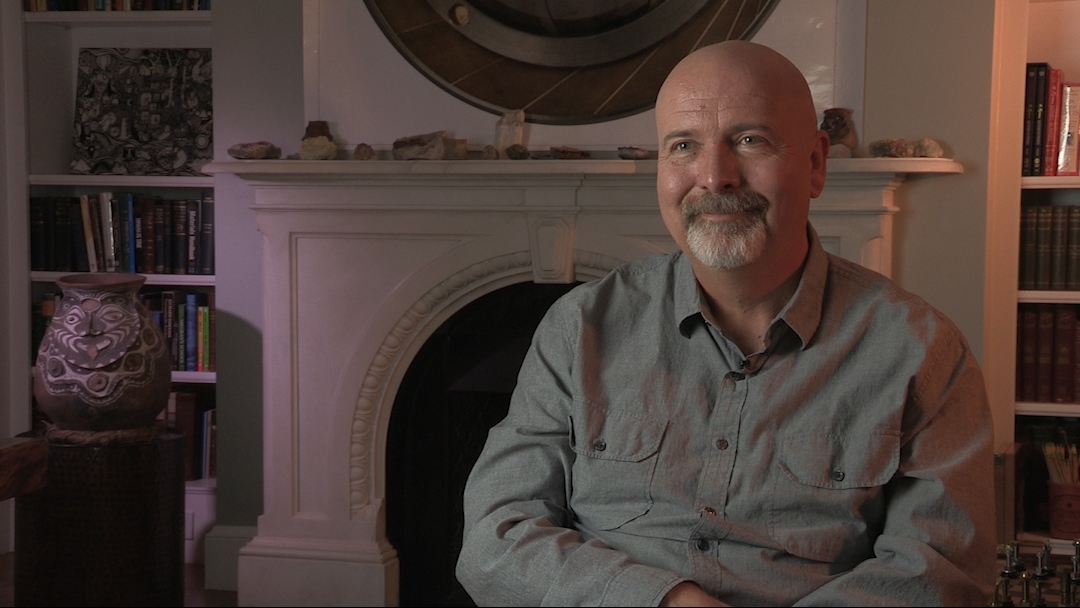NEXT STORY

Meeting Freeman Dyson
RELATED STORIES

NEXT STORY

Meeting Freeman Dyson
RELATED STORIES


|
Views | Duration | |
|---|---|---|---|
| 101. Calculators and computers are the future | 137 | 01:33 | |
| 102. 'I think I want to do what he does': Alan Kay | 167 | 02:33 | |
| 103. Getting to know people before they were famous | 165 | 03:59 | |
| 104. Meeting Freeman Dyson | 357 | 02:48 | |
| 105. Richard Feynman and Thinking Machines | 462 | 02:17 | |
| 106. Richard Feynman – quartermaster for the stationery | 298 | 01:27 | |
| 107. Neurobiology and fast computing | 172 | 02:17 | |
| 108. How Thinking Machines started | 180 | 03:10 | |
| 109. Proving Amdahl's Law wrong | 326 | 02:24 | |
| 110. Thinking Machines – my second education | 151 | 03:22 |


One thing I did at MIT is I deliberately went to the people that I thought were great people. I didn't care what course they were taking. It was just the amazing people. So for example Philip Morrison I hung out with a lot, and he was really an astrophysicist, but he knew about everything. He was the most well-read person I ever knew. His house was full of piles of books and he wrote the book review column for Scientific American. And so he was fantastic to talk about anything with.
So he's an example of the kind of person that I went to. Salvador Luria, I hung out with, actually, Kuhn, like Structure of Scientific Revolutions, deliberately sought out to take his classes. I went... let's see. Susan Carey was a really interesting professor, Tommy Poggio, who had studied the neural systems of flies. He wasn't famous yet, but... and then of course, Marvin [Minsky] knew all these famous people that I got to know, like Francis Crick and people who have all... Ed Fredkin was another fun person to hang out with. He was always inventing things. Jerry Lettvin, of course.
So it was a pretty fabulous mix of... Victor Weisskopf. He was another interesting one. So I would just deliberately go and take whatever courses those people were taking. And mostly, the lab was also a place where interesting people came to. So you could also just sit in Marvin's living room and amazing people would show up. So that was... that was also a pretty great way to meet people, science fiction writers or scientists or even politicians would come through. So he had a steady stream of interesting and stimulating people. So it was a very exciting moment, it was a very exciting time.
I remember, for instance, Ted Nelson wrote the very first book about personal computers. He saw that coming, and he wrote a book called Dream Machines. Or I met Stewart Brand, actually, he came when the media lab started. That was a little later. But he came through and met me and we hit it off immediately and became fast friends from then on. And then people would come up from other universities. I remember, for instance, [John] Tukey would come up and visit Marvin sometimes, and he was actually the outside reader on my committee. And a lot of these people, I don't think I understood how important they were at the time. You know, since then... I knew about Tukey and the fast Fourier transform, but I didn't really know about his contributions to statistics until later. And I think there was... so it was wonderful meeting these people and realising they were interesting before you realised they were famous.
W Daniel Hillis (b. 1956) is an American inventor, scientist, author and engineer. While doing his doctoral work at MIT under artificial intelligence pioneer, Marvin Minsky, he invented the concept of parallel computers, that is now the basis for most supercomputers. He also co-founded the famous parallel computing company, Thinking Machines, in 1983 which marked a new era in computing. In 1996, Hillis left MIT for California, where he spent time leading Disney’s Imagineers. He developed new technologies and business strategies for Disney's theme parks, television, motion pictures, Internet and consumer product businesses. More recently, Hillis co-founded an engineering and design company, Applied Minds, and several start-ups, among them Applied Proteomics in San Diego, MetaWeb Technologies (acquired by Google) in San Francisco, and his current passion, Applied Invention in Cambridge, MA, which 'partners with clients to create innovative products and services'. He holds over 100 US patents, covering parallel computers, disk arrays, forgery prevention methods, and various electronic and mechanical devices (including a 10,000-year mechanical clock), and has recently moved into working on problems in medicine. In recognition of his work Hillis has won many awards, including the Dan David Prize.
Title: Getting to know people before they were famous
Listeners: George Dyson Christopher Sykes
Christopher Sykes is an independent documentary producer who has made a number of films about science and scientists for BBC TV, Channel Four, and PBS.
Tags: MIT, Philip Morrison, Susan Carey, Tomaso Poggio, Marvin Minsky, Edward Fredkin, Salvador Luria, Francis Crick, Jerome Lettvin, Victor Weisskopf, Ted Nelson, Stewart Brand, John Tukey
Duration: 3 minutes, 59 seconds
Date story recorded: October 2016
Date story went live: 05 July 2017